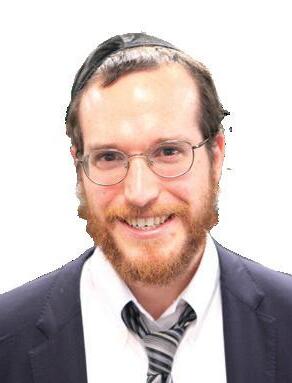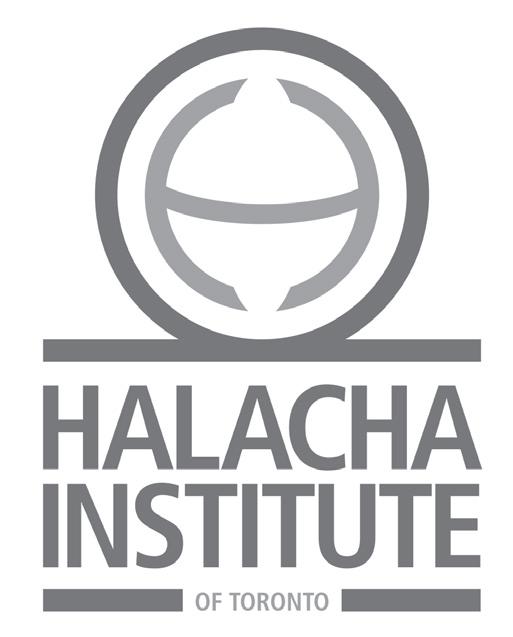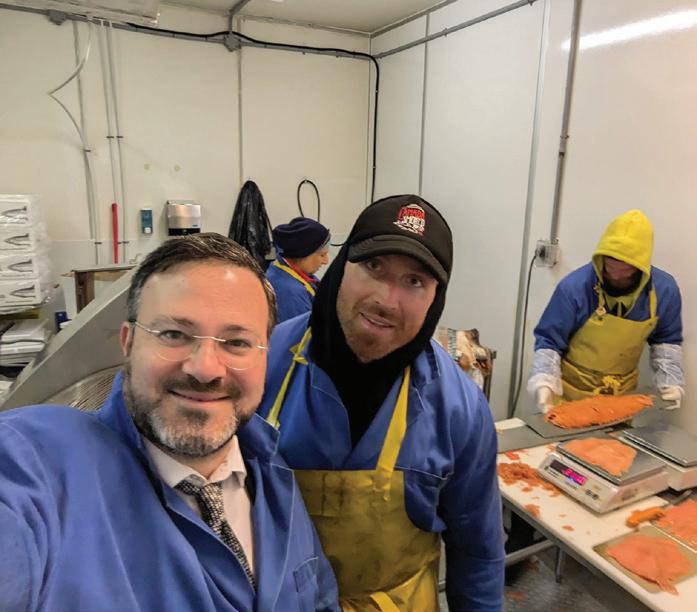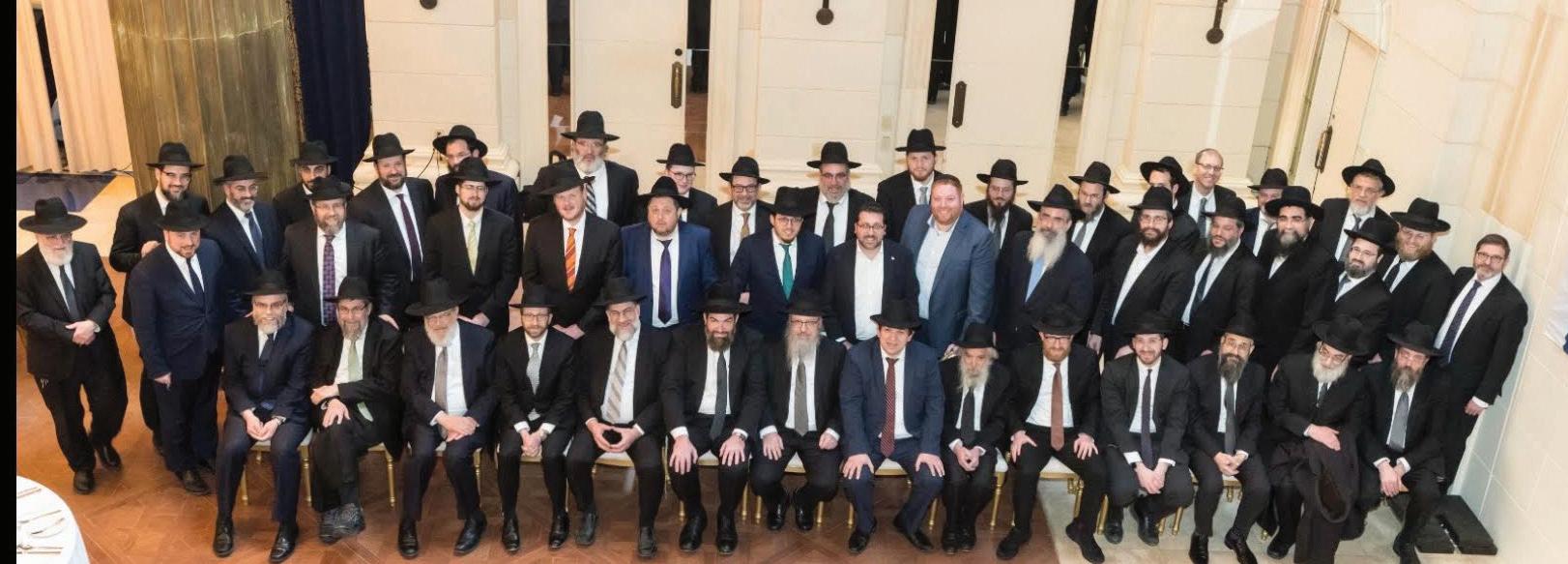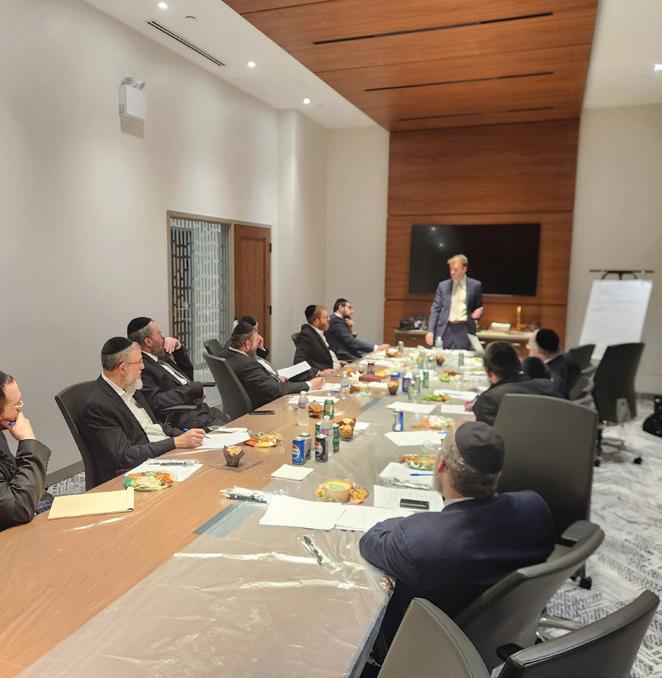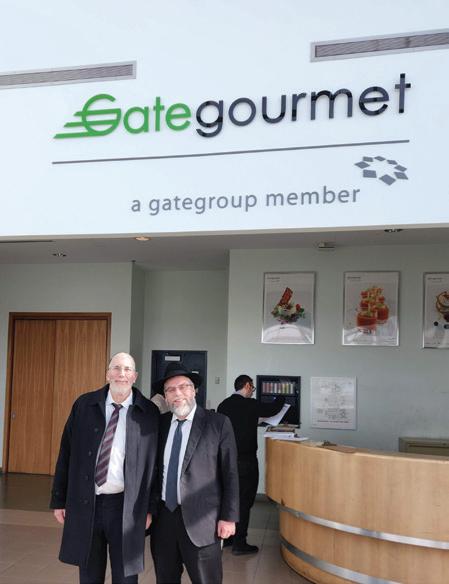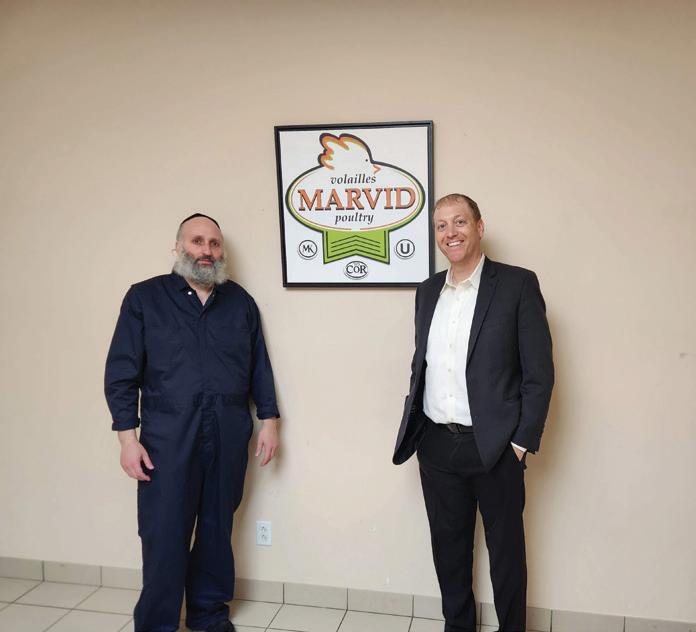THE HALACHIC CORNER

BY: RABBI TSVI HEBER


BY: RABBI TSVI HEBER
n this article, we address the appropriate brachos of contemporary products made from corn. There are two important points that should be clarified at the outset. Firstly, prior to the application of hilchos brachos to manufactured products, it is necessary to understand the metzius. Secondly, brachos on manufactured foods can change based on whether the process to make them becomes the normal way to consume that food. An example of this latter point is the bracha on hearts of palm. While the Gemara1 is explicit that the bracha on hearts of palm is shehakol, many Poskim rule that nowadays the bracha has changed to ha’adoma 2 They reason based on the Gemara that explains that shehakol is appropriate since palm trees are not planted for their hearts. However, nowadays, palm trees are indeed planted for their hearts and the bracha changes to ha’adoma
Corn chips are a snack food made from cornmeal (cornmeal is ground corn with a course and gritty texture) fried in oil or baked, usually in the shape of a small noodle or scoop. Snappy Snax, for example, lists whole grain corn, as opposed to corn flour, as an ingredient. For Corn Cakes, a measured amount of pre-mixed grain is dropped into a
mold. The mold is heated and the grain pops due to the high temperature of the mold. The popping grain cannot escape, and it fuses together in the circular shape of the mold that it is contained in.3 Corn flakes are made from corn kernels split into three equal parts, then dried, rolled into flakes and toasted. Finally, Popcorners are made from corn kernels that have been popped and then ground into a fine powder. The powder is then mixed with water and salt to create a dough, which is then formed into the shape of a chip. The chips are then fried in oil and served with a variety of dipping sauces. What are the brachos on these foods made from corn?
Some kashrus agencies have lists through which consumers can easily access information regarding the brachos of certified kosher products.4 If a corn flake cereal, for example, is not on the list, how does a consumer know what the bracha is? The Star-K writes that if the cereal lists corn flour the corn has been ground and reformed into pellets; therefore, the bracha is shehakol. If the cereal lists corn or milled corn, it may be a whole grain product and the bracha is ha’adoma or it may be ground and the bracha is shehakol. To determine the bracha one must look carefully at the various flakes. If they have jagged edges and the surface of
the flake is bumpy it comes from a grit and the bracha is ha’adoma. If the corn flakes are relatively smooth with very small bumps and the edges are smoother the corn flakes are from a more uniform pellet and the bracha is shehakol 5 These guidelines are well publicized and as a result have become wellaccepted. But what is the halachic source that they are based upon?
The Rema writes that for a cooked or baked product made from kitniyos, such as corn, the bracha only changes from ha’adoma to shehakol if either it has been totally mashed into something whose source is no longer recognizeable, or it has been made into a cooked dish which is not as tasty as the raw product.6 This seems to substantiate the guidelines mentioned above. A product made from corn flour is shehakol because the corn has been ground to the extent that it is no longer recognizaeable. Whereas a product made from corn or milled corn may not be considered ground enough for the bracha to change.7 Some go as far as to say that even if made from whole corn or milled corn the bracha would be shehakol so as long as the source of the product is not recognizeable.8 Accordingly, all the products mentioned above should be shehakol. However, all of this is far from a simple matter.
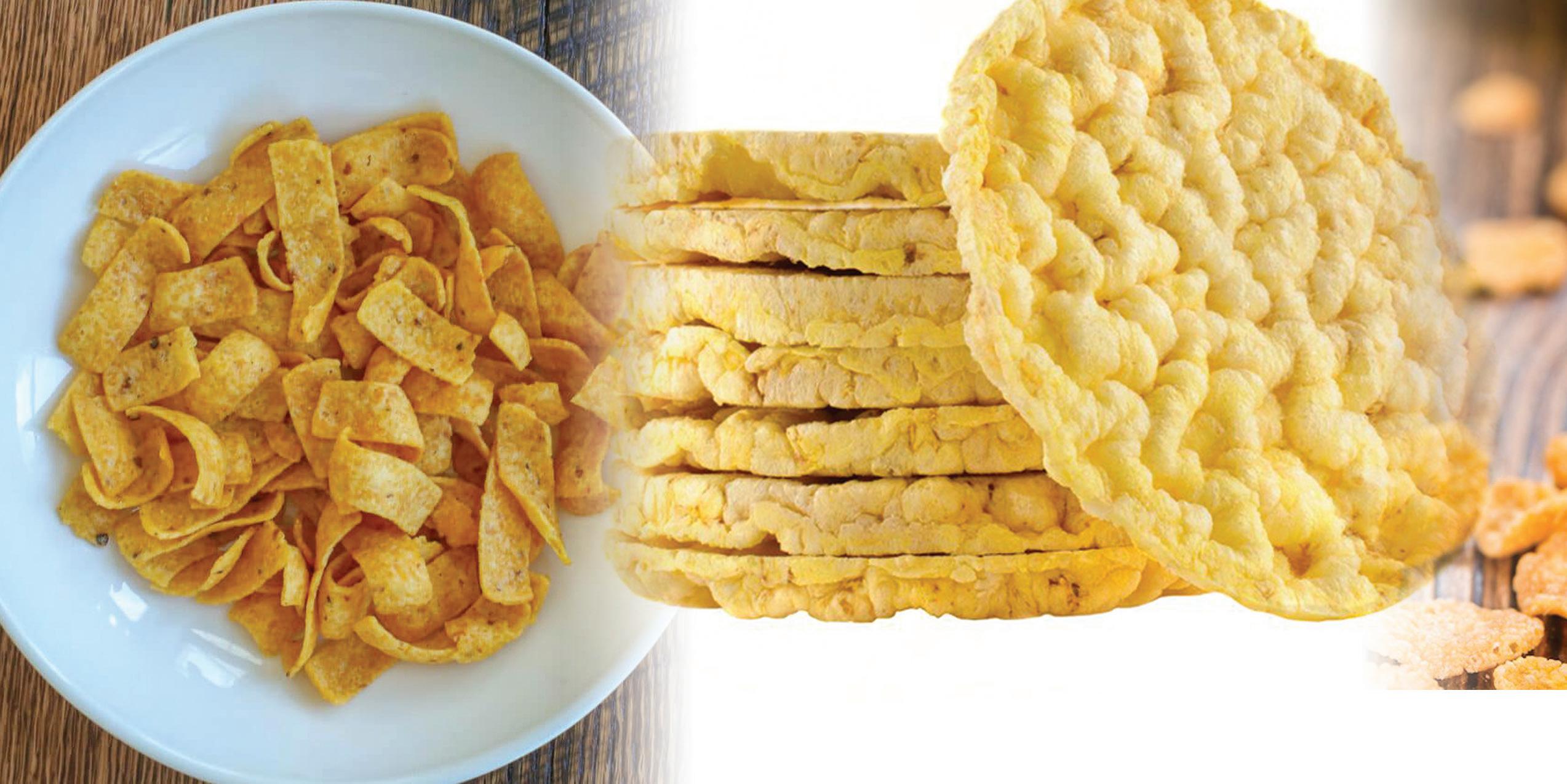
Let us first consider whether the bracha of mezonos might be appropriate for products made from corn flour. After all, mezonos is not specifically reserved for products made from flour of the chameishes minei dagan (wheat, barley, spelt, rye and oats). Products made from rice flour also achieve the bracha of mezonos since they satiate.9 Should this not apply equally to products that satiate which are made from corn flour? While some Rishonim hold that such products should indeed be mezonos, others disagree. They feel that since it is not common to produce baked and cooked products from flour of kitniyos, the appropriate bracha cannot be mezonos 10 Others slighly modify this reasoning and say that it is not because it is not normal to make products from the flour of kitniyos, rather it is because such products never attain the same chashivus as products made from the flour of chameishes minei dagan or even of rice. Such flour contains qualities that allow
for the dough to properly rise which is not the case when it comes to products made from the flour of kitniyos 11
Many Poskim, including the Mishna Berura, are not convinced of this argument and while they ultimately pasken not to make mezonos, they encourage people not to eat products made from kitniyos flour outside of a seudah 12
Now that we have determined that even mezonos might be a consideration for products made from corn flour, let’s reconsider why ha’adoma should not apply. Rabbeinu Yonah contemplates this and suggests two possibilities. It can be because the original “fruit” is no longer recognizeable, thereby effectively converting the bracha to shehakol. Alternatively, it can be because we normally consume kitniyos in their whole state and not in this ground up fashion.13 When the Beis Yosef brings this halacha, he combines the two reasons stated in Rabbeinu Yonah by suggesting that the reason that products which are no longer recognizeable lose their bracha is because
they are not normally consumed in that fashion.14
When discussing the appropriate bracha on jams made from fruit, the Beis Yosef states that in order for the bracha to change from ha’eitz to shehakol it must be both unrecognizeable and an abnormal way of consumption. In other words, the reason for the bracha change in unrecognizeable products is because they are not normally consumed in this fashion.15 In the case of fruit jam, the Mishna Berura is abundantly clear that only when the “majority” of fruit is not consumed as a jam does the bracha change to shehakol. This ruling comes from the Chaye Odom who mentions that we follow the majority.16 However, the Shulchan Aruch HaRav does not require a majority, rather that it should simply be the normal way of consuming the product. In such a case, he holds that even if the product is no longer recognizeable it’s original bracha remains.17
Now let’s come back to products made of

corn flour. The Magen Avrohom is clear that mashing kitniyos into flour only changes the bracha when it is not the normal way of eating kitniyos. He explains that if the kitniyos is mashed in a fine sifter then the bracha changes to shehakol since it is not the normal way of consuming kitniyos
However, if it is simply mashed with a fork then it is the normal way of consuming the product and the bracha remains ha’adoma 18 The Mishna Berura rules like the Magen Avrohom.19 He then argues that since today it is just as normal to consume products made from corn flour as it is to consume corn in its original state, the bracha should remain ha’adoma 20
Historically, some argued that since the most common use of corn is for animal food that using it in any other food product is to be considered abnormal and the bracha would be shehakol 21 The problem with this argument is just that; it may be historical. While the majority of corn is still used for animal feed and fuel, a significant percentage is used for human consumption.
In a multi-billion dollar industry it is difficult to argue that it is not normal to use corn for food consumption just because the majority is used for animal feed and other uses. The words of the Shulchan Aruch HaRav who requires “normal” as opposed to “majority” ring true in contemporary society.
To directly address our questions above, it appears that all products made from corn, whether from split corn, corn grits, corn meal or corn flour which includes all of the products mentioned above should be ha’adoma since they are very commonly consumed and such consumption is quite normal. Those who are more careful might even consider them mezonos and consume them only in the context of a meal.
However, there is still room for justification of the custom to recite shehakol on products made from corn flour. What is the correct bracha for someone who decides to consume raw dough made from wheat, for example? The answer is shehakol, of course.
The reason is because it is not normal to consume raw dough. Only after the dough is baked does it change for the better and take on the special bracha of hamotzee
What about dough made from rice flour? Also, the bracha is shehakol. Only after the dough is baked does it change for the better and take on the special bracha of mezonos
Now, what about dough made from corn flour? Similarly, the bracha is shehakol When the product is baked into something that can be consumed, perhaps we can no longer apply the original bracha, similar to the two cases made above. And considering that there is no special bracha for products baked from corn flour, the shehakol would remain its bracha
RABBI TSVI HEBER Director of Community Kosher



“Is the Canadian government trying to ban shechita?” The short answer is no. The longer answer requires more explanation.
BY RICHARD RABKIN
Kosher slaughter is enshrined under Canadian law as an acceptable method of animal slaughter and its implementation is regulated by the Canadian Food Inspection Agency (CFIA). In 2018 the government passed legislation called the Safe Food for Canadians Act, and in January of 2019 the CFIA published new guidelines relating to shechita. These guidelines introduced new indicators that were required at slaughterhouses to ensure that animals are unconscious prior to moving them on the production line. These new indicators can take up to a few minutes to administer and in modern slaughterhouses they slow down the production line significantly. So much so, that abattoirs which once happily accommodated kosher slaughter in Canada started closing their doors to the Jewish community because they can’t accommodate such a slow line speed and they do not want to be associated with a practice that the government views as inhumane.
We expressed our grave concerns to the CFIA, trying to negotiate with them over the course of a couple of years but unfortunately, we were not able to come to a resolution. As a result, the Kashruth Council of Canada (COR), the Jewish Community Council of Montreal (MK), Mehadrin Meats and Shefa Meats, together with significant support from CIJA, UJA Federation of Greater Toronto and Federation CJA in Montreal and some generous philanthropists, sued the government to remove these new restrictive guidelines.
We took this action because we felt that we had no choice. Because of the abattoir closures, the Canadian Jewish community had to begin importing significant amounts of meat from outside the country. This is not a viable long term solution because it can affect both supply and cost. But more importantly, we felt that these new guidelines were a direct attack on Jewish tradition. One of the hallmarks of a thriving Jewish community is a stable and secure access of domestic kosher meat. Furthermore, historically, attempts to restrict shechita have often been accompanied by dangerous antisemitism falsely associating Jews with cruelty.
Efforts to restrict shechita are so misplaced precisely because shechita is a humane method of animal slaughter. As is well known, animal welfare is an important Jewish value and causing unnecessary pain to animals is prohibited by the principal of tzar baalei chayim. That is why the knife used by shochtim has to be razor sharp without even the slightest nick, so that the cut is painless, and the animal doesn’t suffer unnecessarily, even for a split second. This is not just attested to be the weight of Jewish tradition; it was echoed by our impressive team of medical and scientific experts. This team includes a senior veterinary surgeon, neurologists, cardiologists, a neuroscientist and others. They have all produced reports indicating that the best evidence is that shechita causes unconsciousness as quickly as stunning and possibly faster, ensuring a humane slaughter of the animal obviating the need for the CFIA’s new indicators. In fact, there is no reliable scientific evidence to support the claim that absent the use of the CFIA indicators, performance of shechita would result in an inhumane treatment of animals.
What then is the CFIA’s issue? The argument is that after shechita, the animal might still be conscious and might still experience pain and as a result it should be left alone for a period of time, up to a few minutes, before moving it along the production line. But the science demonstrates that this is incorrect. Within a few seconds after shechita the animal rapidly proceeds to unconsciousness, similar to how a person might faint. When someone requires surgery for example, he is unconscious and thus does not feel the surgeon’s knife. This is similar to what the animal goes through after shechita. This evidence was introduced by our lawyers in court.
In April of 2024 we brought a motion for an interlocutory injunction to ask the courts to direct the CFIA to cease using their new indicators of unconsciousness. We introduced the scientific evidence supplied by our experts but also relied on religious freedom rights afforded under the Canadian Charter of Rights and Freedoms (the “Charter”).
In July of 2024 Mr. Justice Regimbauld handed down his decision in our favour. In his reasons, he wrote:
The Guidelines are also discriminatory as they unfairly associate a religious practice of shechita to animal pain, and impose a challenge that does not apply to non-kosher meat production. The Guidelines therefore impose on Jews a burden and deny them benefits in a manner that has the effect of reinforcing, perpetuating, or exacerbating a disadvantage. Their Charter rights to freedom of religion and the right to equality enshrined in the Charter are therefore unjustifiably restricted.
Since Justice Regimbauld’s decision, some of the abattoirs that previously closed to kosher slaughter have expressed interest in resuming production while others new to kosher are exploring the idea altogether. These are certainly positive developments. But abattoirs need predictability and that will only come when we have a final pronouncement from the courts or the CFIA.
It is important to note that since the court’s decision, CFIA officials in Ottawa have engaged with us in a spirit of cooperation and have expressed their interest in working with the Jewish community within the framework of their mandate. We are hopeful that this will continue.
Like many communities worldwide, the Canadian Jewish community feels less secure now than in recent memory. Understandably, threats to kosher slaughter only heighten this sense of unease. We remain hopeful that a long-term solution can be reached—one that acknowledges shechita as a humane method of animal slaughter and reaffirms the place of Canadian Jewry within the broader fabric of Canadian society.
Director
RICHARD RABKIN Managing

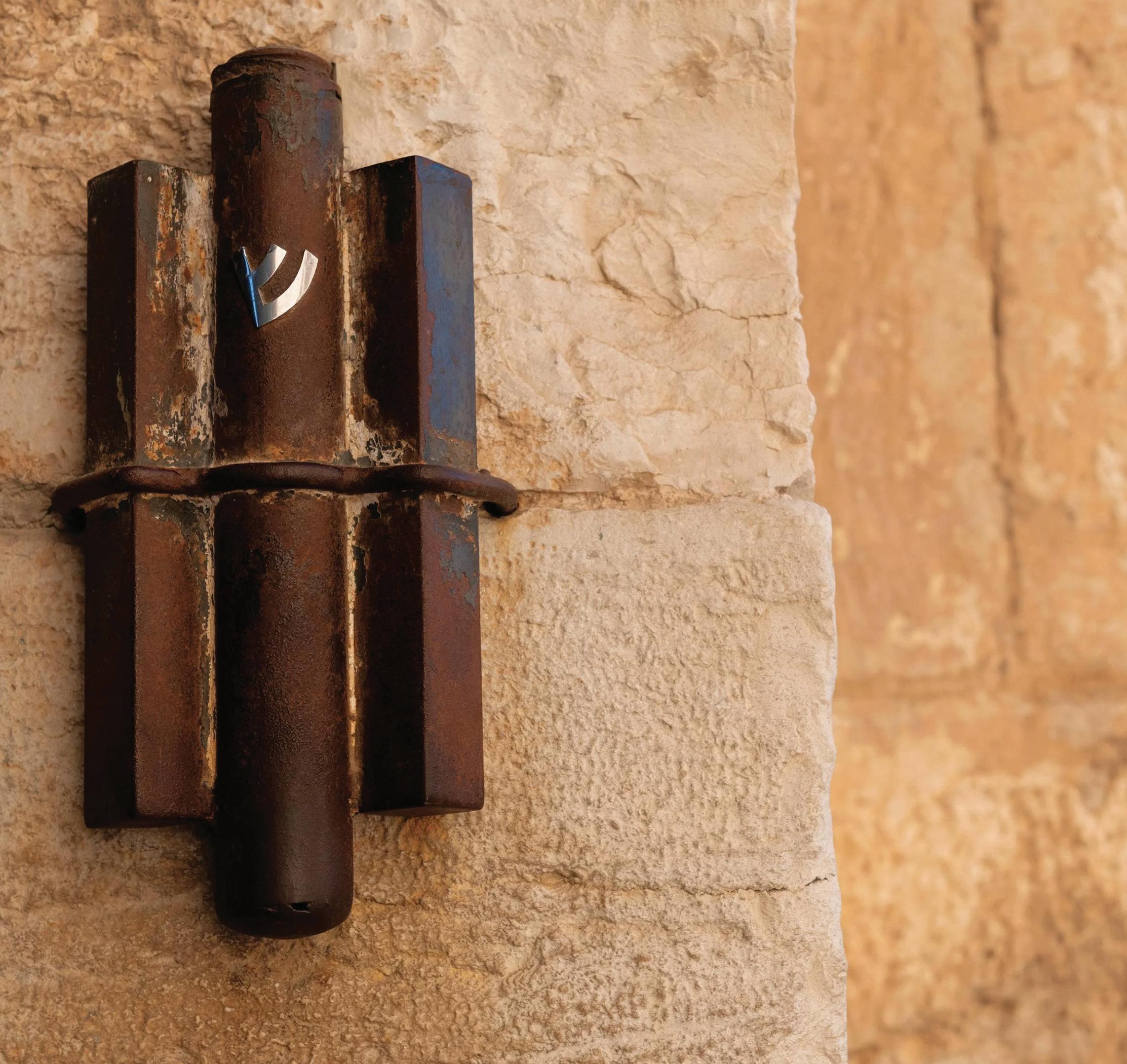
BY: RABBI ASSAF AVRAHAM SWISSA
the mezuzah is placed on the right doorpost. If someone placed the mezuzah on the left doorpost, he has not fulfilled the mitzvah.5
When the backyard has access to the street (image #2), many poskim rule that the mezuzah should be placed to one’s right when entering the house from the backyard.9 They explain that the yard is secondary to the house in its usage, and the doorway to the house is seen more as an entrance to the house and less as an exit to the backyard. However, other poskim disagree10. The prevalent custom follows the first opinion.11
n each of the first two paragraphs of the Shema, the Torah mentions the mitzvah of affixing a mezuzah in the doorway of one’s home1. The Gemara (Menachot 32b) derives from the word ךירעשב that the mezuzah needs to be mounted within the threshold of the doorway, between both doorposts and underneath the lintel. The Gemara also infers from the word ךירעשב that one must attach the mezuzah securely to the door post.
The Rambam2 writes: "A person should be very careful with the mitzvah of mezuzah because it is a constant obligation. In addition, each time a person goes in and out [of his house] he will encounter the name of Hashem and will be reminded of His love towards us. This will awaken him from his slumber and [save him] from the folly of pursuing that which is transient.3"
The Gemara (Menachot 34a) learns from the word ךתיב - ךתאיב ךרד - the way you enter, that the mezuzah must be placed on the post to one’s right when entering into the doorway. Because most people begin walking by raising their right foot4, therefore,
But sometimes it is not clear which is the right doorpost. For example, when a door is situated between two rooms, which room is the doorway serving as an entrance, and which one is functioning as an exit? Determining this will impact on which side the mezuzah should be installed.
To decide, the following questions, listed in order of priority, must be answered:6
1. Do both rooms’ functions require affixing a mezuzah?
2. Is one room an inner room?
3. Which way does one enter more frequently?
4. Which one is the primary room?
5. Where are the hinges of the door located?
A common scenario one may encounter is when a doorway opens to a backyard (or balcony) that does not lead out to the street (image #1). In such a case, although the Chazon Ish writes7 that the mezuzah should be to one’s right when entering the house from the backyard, the overwhelming majority of poskim disagree. They maintain that the mezuzah should be placed to one’s right when going out to the backyard. Since the only way to access the backyard is through the house, it is treated as an inner room of the house.8
When the right door of a double entryway is kept locked and rarely used but is opened when needed (e.g. to accommodate large gatherings), it is considered a door according to all poskim. Therefore, the mezuzah should be placed on the right doorpost. However, if the right door is only opened to provide space for large deliveries, poskim disagree as to whether one should still affix the mezuzah on the right doorpost,12 or on the right door instead, as it serves as a doorpost (image #3 illustrates the second opinion)13 Rabbanim rule like the first opinion.14
Let’s look at a case of a left-handed sliding door. Such a door has the sliding door-panel on the left side when viewed from the exterior, and a stationary panel on the right.
Many halachic authorities hold that one is obligated to place the mezuzah on the right doorpost when entering the house (spot A in image #4).15
However, since only the left side of the doorway is entered through, some poskim write that the mezuzah should be put on the end of the fixed right panel (spot B in image #4), as the panel is considered an
extension of the wall.16 Rabbanim rule like the first opinion.17
One should invest in buying a mezuzah which is beautifully written (mehudar), from a sofer who one knows is םימש ארי and is proficient in all the laws relating to ם"תס (sefer torah, tefillin, and mezuzah).18
The mezuzah should be checked every 3.5 years.19 If a mezuzah is located in a humid area, it must be checked more frequently (i.e. once a year) since humidity can easily ruin a mezuzah 20 It is a minhag chasidut to check one’s mezuzot every year in the month of Elul 21
The Rama (285:2) writes to place one's hand on the mezuzah when entering and leaving the house. The Chida 22 quotes from the Arizal to touch the name יקש on the mezuzah and kiss that hand. The Rama adds that one should say the following tefilla: םלוע
The Ben Ish Chai 23 brings a longer nusach:



The Gemara (Menachot 33b) tells us that the mezuzah should preferably be placed on the outermost tefach of the doorpost.24 This serves a dual purpose:
• First, people will immediately see the mezuzah and remember the oneness of Hashem.
• Second, the entire house – from the outer tefach inward – will be protected from spiritual and physical harm.25
The Gemara teaches that a king of flesh and blood remains inside while his servants stand outside and protect him. In contrast, we sleep in our beds and אוה ךורב שודקה watches over us from outside. Furthermore, even when we leave the house we are protected because of the mezuzah 26
May the merit of this great mitzvah offer protection for the entire Jewish people.
RABBI SWISSA
Rabbinic Field Administrator
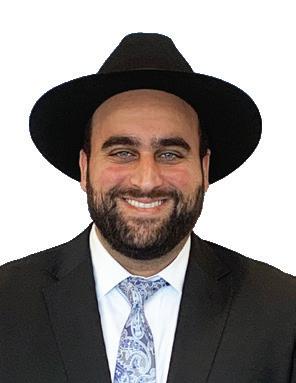
1 4 2 3


BY RABBI YECHIEL TEICHMAN
The requirement to wait after eating meat before consuming dairy is well known. But what must be done before eating meat after having dairy?
The Shulchan Aruch1 paskens that a person may eat meat after eating cheese without waiting, provided that his hands are clean from cheese2, and that he cleaned out his mouth by eating and drinking (kinuach v'hadacha).
Kinuach (wiping) can be done by eating any bulky food besides flour, dates and green vegetables, as these foods tend to stick to the palate. Hadacha (rinsing) is done by drinking.
The Poskim discuss whether brushing one’s teeth and rinsing afterward is an acceptable alternative to cleaning the mouth3. The consensus among many contemporary Poskim4 is that brushing is not as effective as eating something. Eating food wipes the surface of one’s entire mouth (i.e. teeth, gums, and palate), while brushing only cleans a small area of the mouth, namely the teeth.
If one does not have any parve food to eat between milk and meat, Rav Shlomo Miller advised that brushing carefully one’s entire mouth, and rinsing would be an acceptable substitute for eating something.
The Gr”a5 and the Pri Chadash6 write based on the Zohar that one should not eat meat immediately after eating cheese; instead, he should wait one hour and bentsh before doing so. A common minhag is to wait one half-hour. According to some Poskim waiting
this length of time and bentshing fulfills the Zohar’s instruction.
The requirement to perform kinuach v'hadacha applies to someone who wishes to eat meat right after eating cheese. Does that requirement extend beyond that time-frame? After how much time can we assume no dairy residue remains?
Many Poskim (Emes L'Yaakov Yoreh Deah note 37, see also Psakim U’tshuvos) say that once one hour passes, kinuach v'hadacha are no longer required. Waiting one hour accomplishes what kinuach v'hadacha accomplishes. A source for this approach can be found in the Shach. The Mechaber7 requires waiting six hours after eating meat before eating dairy. The Rema writes that some maintain that if one finishes eating, bentches and does kinuach v'hadacha, he may eat cheese. The Rema continues by stating that where he lived, the accepted minhag was to wait one hour. The Shach8 writes that after one hour passes and one’s mouth seems to be clean, kinuach v'hadacha is not required. The requirement for kinuach v'hadacha is only relevant according to the approach that allows eating cheese immediately after bentching. If one waits before eating cheese, however, then kinuach v'hadacha is not required. These Poskim argue that if waiting one hour obviates the need for kinuach vhadacha after eating meat, then certainly it does so after eating cheese, since eating meat after dairy is more lenient. (Minchas Yaakov, however, writes that one should be machmir and follow the approach of the Taz who requires kinuach v'hadacha even when one waits after eating meat, as does the Pri Megadim.9 The Pri Chodosh10 and Eliyohu Rabah11 follow the Shach. The Chochmas Odam12 explains the Rema according to the Shach’s understanding. This question is relevant for someone who is ill and must eat dairy soon after consuming meat.)

According to the aforementioned Poskim, those who wait one halfhour after dairy must do kinuach v'hadacha before eating meat. Indeed, Basar B'chalav (R’ Zev Hofstedter) quotes Rav Moshe Shaul Klein who advises that the public should be made aware of this requirement. On the other hand, some Poskim (Rav Moshe Aryeh Freund, Rav Shlomo Zalman Ulman) maintain that after one half-hour passes from when one ate dairy, kinuch v'hadacha are no longer required.
Rav Refoel Blum, (Kashau Rav in sefer Birchos Shamayim Y.D. 22) writes that it is proper to do kinuach v'hadacha even after waiting one half-hour. However, he finds justification for those who wait one half-hour after eating soft cheese, and only rinse their mouthhadacha without kinuach-before eating meat.
This is based on the following two reasons:
1. The Rashash13 asserts that after drinking milk one may clean his mouth by doing hadacha (rinsing) alone; kinuach is not required. Kinuach is only required when one eats (semi-hard) cheese which sticks to the mouth. Rav Blum suggests that butter, yogurt and soft cheese is similar to milk and hadacha suffices according to the Rashash.
2. The Rashb"a (quoted by the Gr"a14) maintains that between eating dairy and meat it is enough to do either kinuach or hadacha. Although the Shulchan Aruch requires both, Eliyohu Rabah15 paskens that hadacha is enough. Where one half-hour has already passed, and one ate soft cheese, one may rely on the Eliyohu Rabbah and eat meat after doing hadachah alone.
Rav Blum concludes that, although it is better to do kinuach v'hadacha, the general practice to rely on hadachah after waiting one half-hour after eating soft cheese is justified.
As in all matters of halacha one should consult with their Rav to determine which custom to follow.
RABBI YECHIEL TEICHMAN
Rabbinic Administrator and Halachic Advisor


Please be advised that as per a decision of the Rabbis of COR’s Rabbinical Vaad HaKashruth, unkashered liver is no longer being sold in Toronto. The Rabbis heard many unfortunate stories from kosher consumers who purchased unkashered liver in supermarkets and served them in their homes without the necessary kashering. Detailed kashering instructions were previously included on the packaging of unkashered liver, but it seemed that too many people were not careful enough to read these instructions properly. This is the reason why none of the other major kashrus organizations with whom we consulted permit the sale of unkashered liver to consumers. Ultimately, this is why the Rabbis decided that selling unkashered liver in Toronto is too great of a risk to justify.
We would like to note that prior to making this decision, we conferred with local proprietors who reassured us that they have the capacity to kasher liver in Toronto to meet the needs of kosher consumers in the city.
In previous generations, shechted chickens were sold without being fully kosher as they still required soaking and salting to remove forbidden blood. Over time, this was phased out and kosher certifiers only permitted the sale of fully kosher chickens to end consumers as the expertise of kashering chickens at home became less well known. Similarly, kosher certifiers today do not permit the sale of chicken livers that are not yet kosher. COR’s recent decision brings us in line with the industry standard in place amongst kosher certifiers today.

BY RABBI YOSEF DOVID ROTHBART
Kiddush levana, the sanctification of the moon, is regarded as a unique mitzvah, likened to greeting the Divine Presence (Shechina).1 It is a brief ceremony recited during the first half of each lunar month. However, it depends on the moon's visibility, making it subject to the changing weather conditions. In the Canadian winter, when the clouds seem ubiquitous and the moon is often concealed, the opportunity to recite kiddush levana can feel elusive. This article explores the considerations surrounding reciting kiddush levana when the skies are obscured.
Although not the earliest source2 to discuss what to do when the moon is covered, the Radvaz3 is quoted by the later poskim4 as ruling that one may not recite kiddush levana unless the light of the moon reaches earth. He explains this by comparing kiddush levana to the bracha one recites over fire during havdala. Just as one must enjoy the flame of the havdala candle and be able to utilize the light to distinguish between two coins, so too by kiddush levana, one must see sufficient light to be able to distinguish between coins. Therefore, if a thin cloud covers the moon and its light is able to shine through the vapour and benefit man, one may recite kiddush levana; if the clouds are too thick and do not allow sufficient light to reach earth, one may not recite the bracha
The Nesivos Hamishpat5 brings a proof to this approach from the language of the Rema6 who writes, “And one shall not sanctify the moon except at night at a time when the moon is shining and [people] benefit from its light.” Clearly, one may not recite kiddush levana when the moon is covered and its light is not visible.
Indeed, the Mishna Berurah7 accepts this approach. He rules that when thick clouds cover the moon and block its light, one may not recite kiddush levana. However, when a thin cloud blocks the moon, since one may benefit from its light, kiddush levana may be recited.
The ruling of these poskim is not without dispute. There seems to be a divergent approach.
The Gemara8 does not define the earliest time to recite kiddush levana. The rishonim contemplate this and reach various conclusions. The Rambam9 maintains that kiddush levana should be recited the first night of the new month provided that the moon is visible. Rabbeinu Yonah10 brings that one may only recite kiddush levana when the light of the moon is of benefit to someone on earth. This happens two or three days after the molad occurs.11
The Rambam, who maintains one recites the bracha the first day of the month, before the time that the moon’s light is beneficial for people, clearly understands
that kiddush levana is not a bracha one recites when benefiting from light of the moon. Instead, the bracha is recited when one sees the moon in its state of renewal. Rav Moshe Feinstein tz”l12 writes that the approach of the Rambam is accepted by the Mechaber
Accordingly, whether one may recite kiddush levana before the light of the moon is bright enough to benefit people is subject to disagreement.
Practically, the Mishna Berurah writes that one must benefit from the light of the moon to say kiddush levana. One can determine this by imagining being in the middle of a blackout, with the only available light coming from the moon. If that light is strong enough that a person can benefit from it, he may recite kiddush levana. This will depend on the size of the moon and the thickness of the clouds. See footnote.13 In general, a barometer to use is when the shape of the moon can be clearly seen through the clouds, one may recite kiddush levana
If one recited the bracha when thicker clouds covered the moon, another bracha should not be recited in deference to the approach that the mitzvah was fulfilled. Instead, that person should fulfill the mitzvah with someone else who is reciting the bracha, or, alternatively, say kiddush levana without using Hashem’s name.14 It would seem that one may also read from the Gemara or Tur which reads, “One who sees the moon in its
state of renewal should recite ורמאמב רשא י"אב,” for then he will be able to mention Hashem’s name when reciting kiddush levana. If kiddush levana must be recited (since he did not fulfill his mitzvah with his first recitation), this recitation will count as kiddush levana. If not, then Hashem’s name was not said for naught, as the person saying it did so in the context of learning the Gemara or Tur 15
Although one may recite kiddush levana when the moon is covered by a thin layer of cloud, some poskim16 maintain it is preferable to wait until the moon can be seen, without even a thin covering. However, if delaying kiddush levana may result in one being unable to fulfill the mitzvah (due to thickening clouds) or to lose out from saying it with a minyan17, one should recite kiddush levana despite the thin cloud covering.
We have seen that when the moon is covered and the covering blocks the light of the moon from reaching earth, one may not recite kiddush levana Oftentimes, part of the moon is covered by thicker clouds and part of the moon is not obstructed at all. May one recite the bracha when seeing such a moon?
One does not need to see the entire moon to recite kiddush levana 18 As such, even if only part of the moon is visible (and even if that small section is blocked by a thin cloud), if the light emanating from that section is beneficial (as defined earlier) one may recite the bracha. If not, then one would need to wait.
It is possible that even when that small section provides sufficient light to recite kiddush levana, since part of the moon is covered, according to the poskim who prefer that the moon not be obstructed by even a thin cloud, one should wait to recite the bracha 19 However, if delaying kiddush levana may result in one being unable to fulfill the mitzvah, one should not wait.
COVERED DURING THE BRACHA
A person who began reciting kiddush levana and did not finish the bracha before thick clouds covered the moon, may finish reciting kidddush levana. However, if before beginning the bracha he sees that this will happen, he should not start.20 If he did, he may complete the bracha 21 If he is unsure, he may recite kiddush levana, and if the moon gets covered mid-bracha, he may finish.22
The Jewish people are compared to the moon. Kiddush levana symbolizes how the Jewish people, like the moon, will one day be restored to their full glory, their bright light not eclipsed by thick clouds. May the merit of this great mitzvah usher in this reality speedily, in our days.
